NOVEMBER 8, 2022 : Knowing we had an 11:30 appointment to see the synagogue in Ioannina, we managed to leave Meteora by 8:00 in the morning. We had at least two hours of driving ahead of us.
The first hour was a beautiful drive, twisting and turning on a mountain road. Scenery was gorgeous.

We then met up with the main toll highway and got on for one more hours drive. This highway, instead of going up and down the mountains, was a series of tunnels through the mountains. One tunnel after the other. We lost count at 12. Some were just a few hundred meters; others were kilometers long. You would exit one, and soon you were in the next tunnel. It made for quick driving.
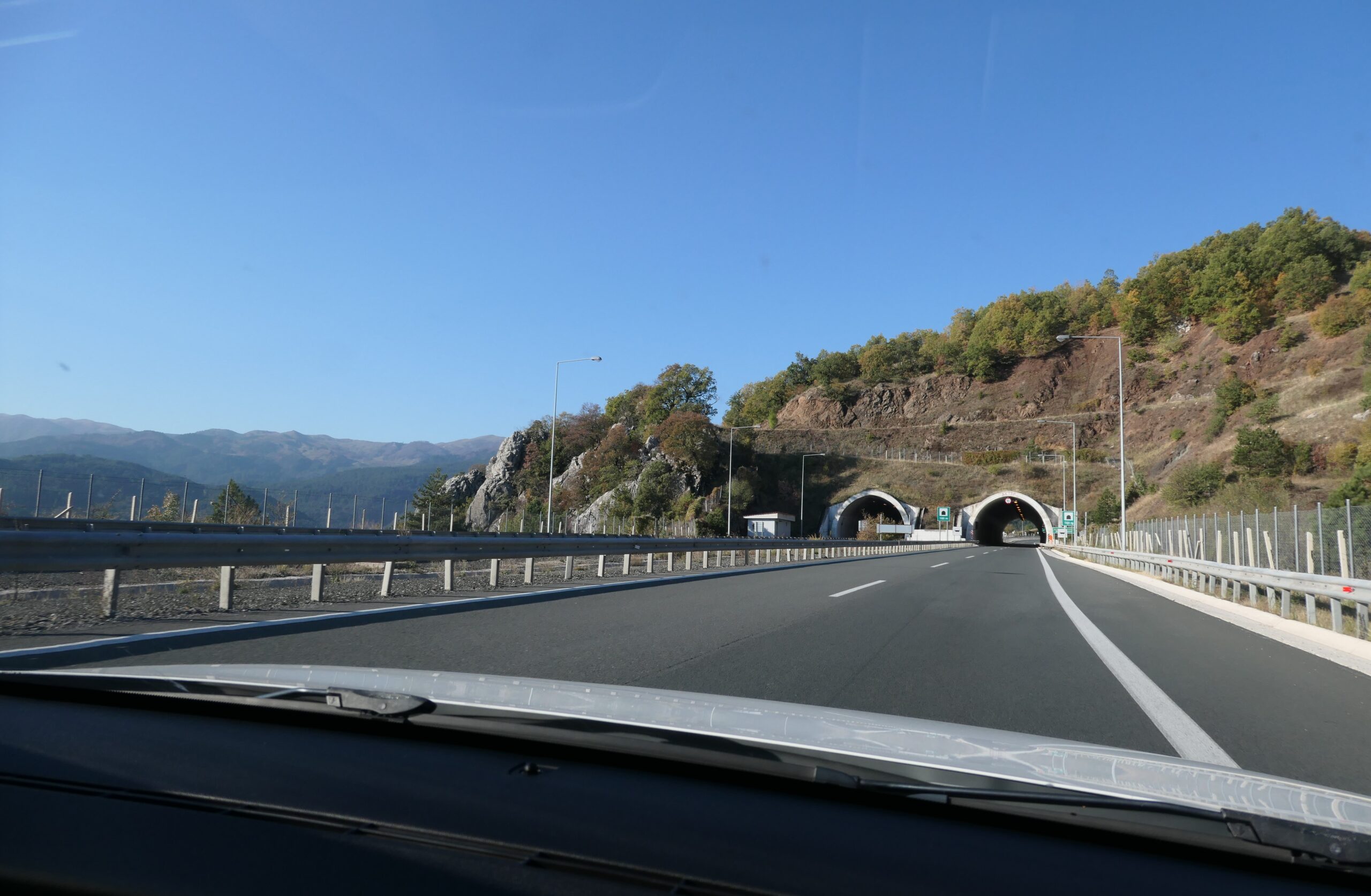
As we approached Ioannina, the road entered a dense fog. We could barely see the car ahead of us. The mountains disappeared. Now driving was slow going. Good that we had left early.
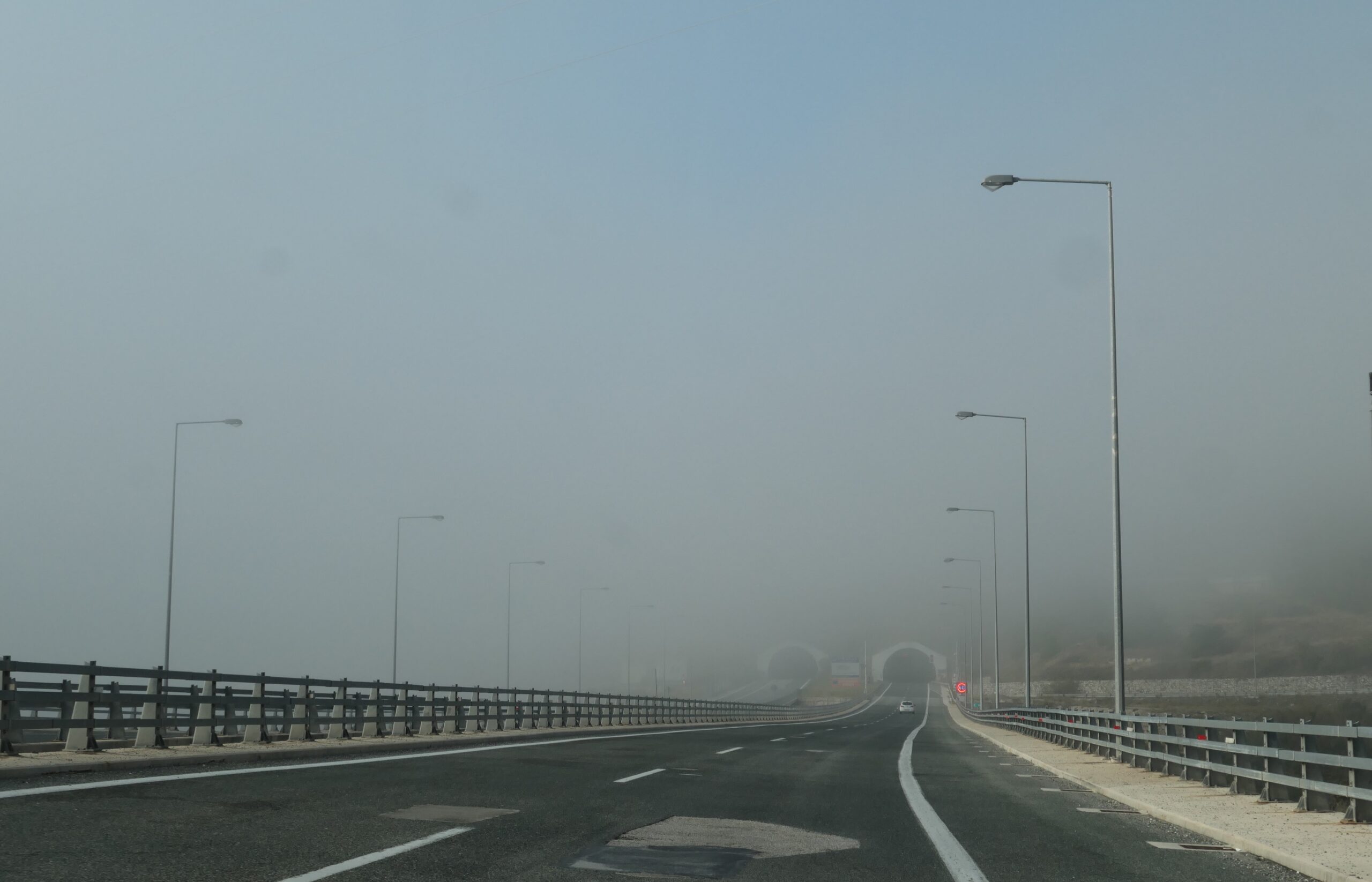
We arrived in Ioannina literally in a fog. The city sits on a large lake, and although we were driving next to the lake, we could not see the water.
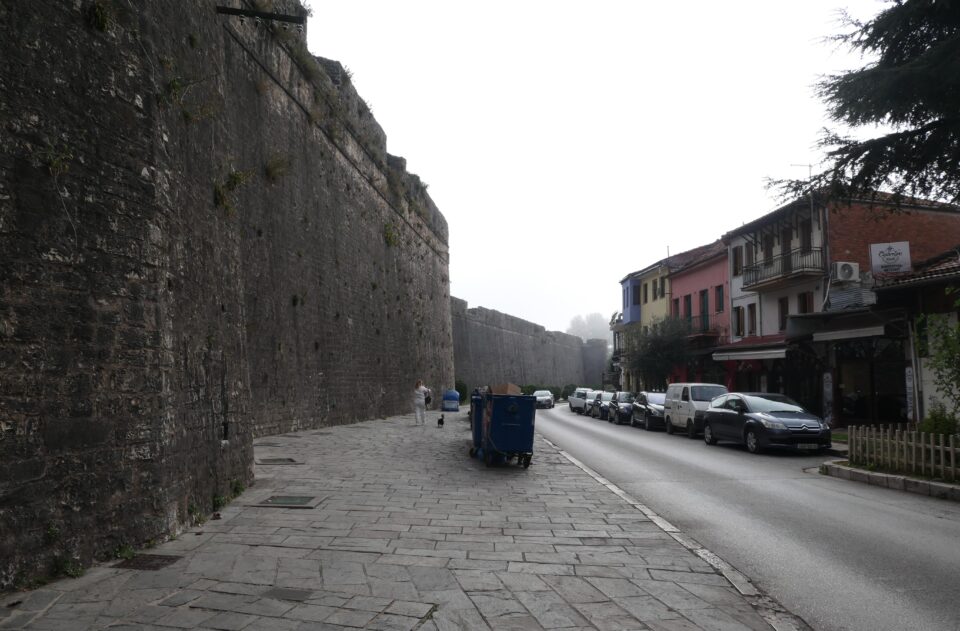
We were still early, so we headed first to the Tourist Information Office, hoping they had bathrooms. No luck. No toilets available to use in Tourist Information (we have found this to be generally true). Instead, we went to a café, had coffee and tea, and used their facilities. It’s a bit counter-productive, in order to go, you order a drink, which in turn makes you go again… As we sat there, the fog lifted, and we enjoyed some sunshine.

The city of Ioannina was once the center of the Romaniote Jewish population. The Jews lived in their own quarters both inside the city wall and adjacent to it. We entered the walled old city of Ioannina, and near the city gate, found the synagogue. The door was open, and we went in. Another couple were already there on a private guided tour.
The synagogue is built in the Romaniote style – the bimah (where the Torah scrolls are read from during services) is on a raised platform by the western wall, the ark where the Torah scrolls are kept is on the eastern wall and in the middle there is a wide interior aisle. Seats face the aisle and not the ark as in Ashkenazi synagogues.
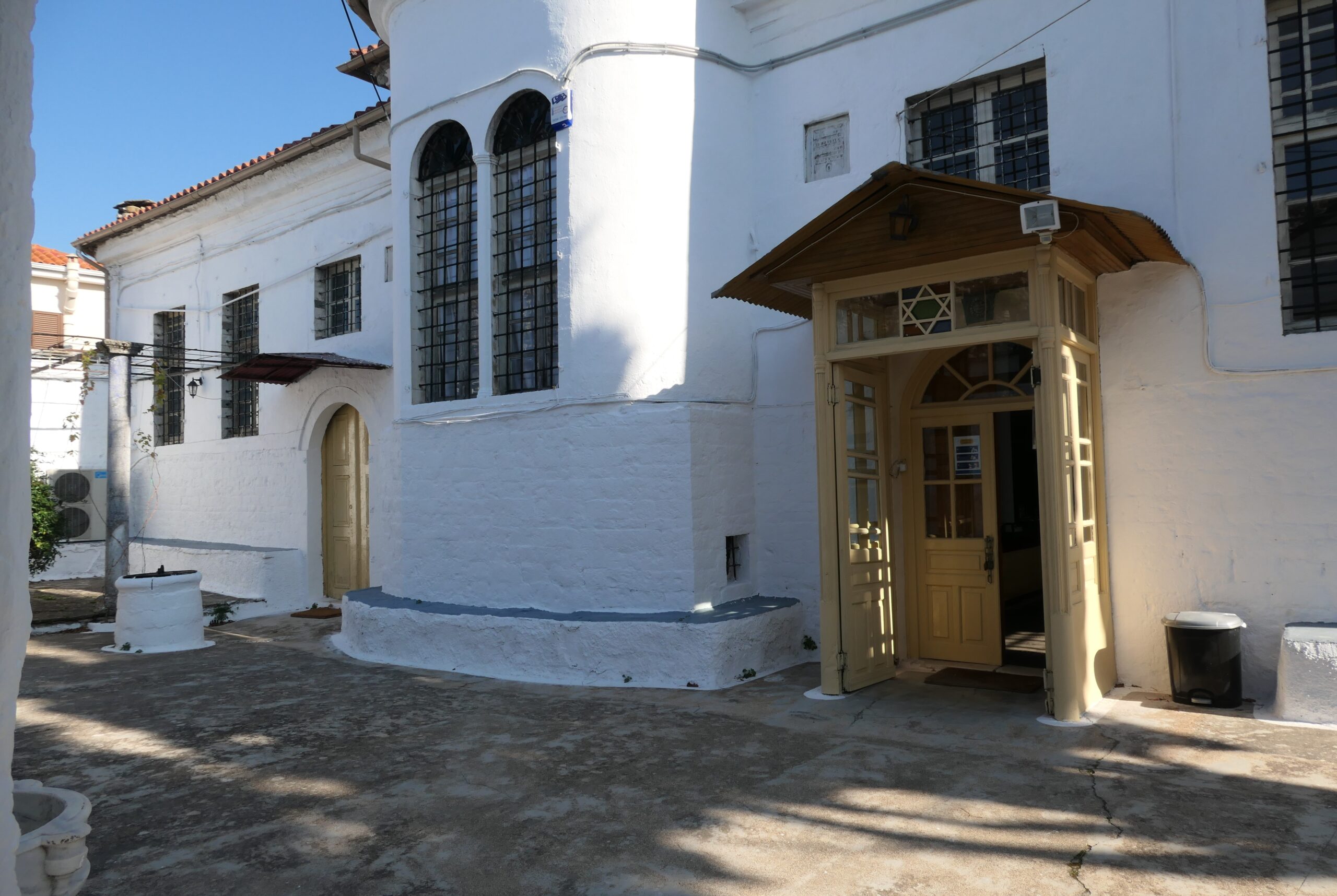
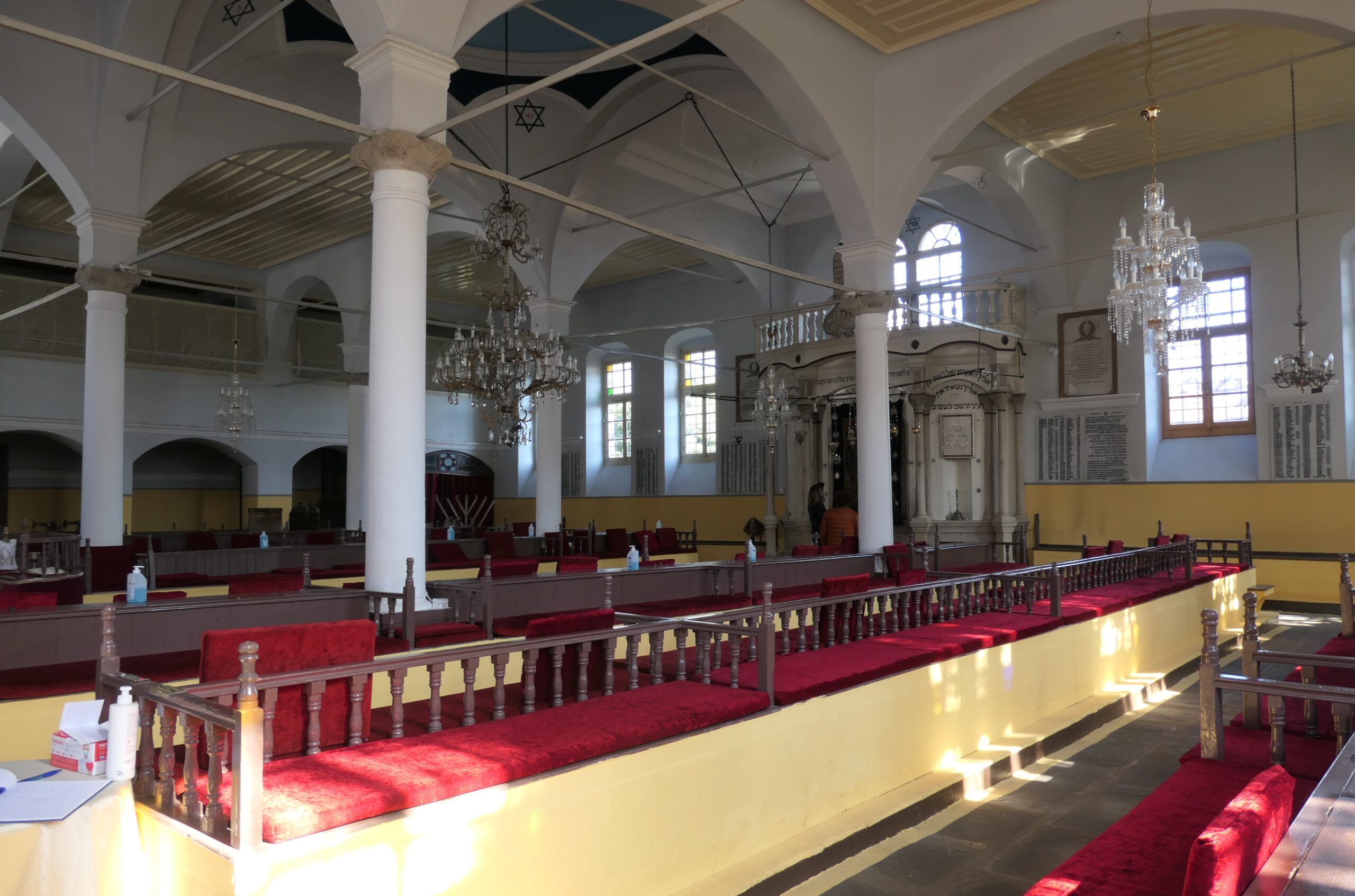
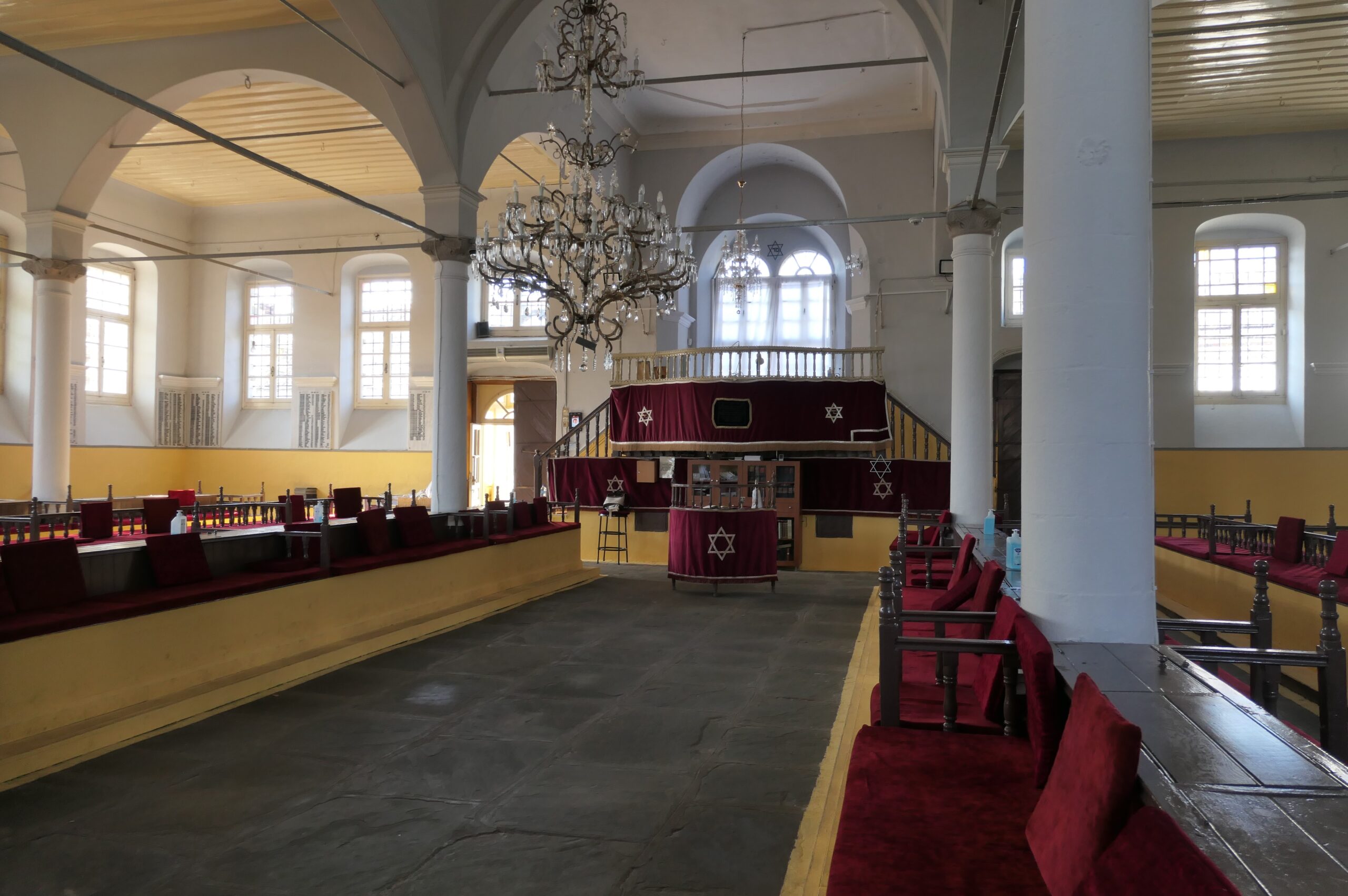
The covering of the ark was decorated with silver medallions call shadayot. In Ioannina, it was traditional to give these as a gift to the synagogue on special family occasions such as a wedding, a birth or in memoriam. The name comes from the words “El Shadday” that are engraved at the beginning of each medallion.

All around, on the walls of the synagogue, were plaques with the names of the 1882 Jews from Ioannina that were killed in the Holocaust. At the beginning of the war, there were about 2000 Jews living in Ioannina. First, the Italians came and after their surrender to the Allies, in 1943, the Germans arrived. On March 25,1944, 1,980 Jews were rounded up and taken to Auschwitz. The names of the victims are memorialized on these plaques. Only 163 survived.
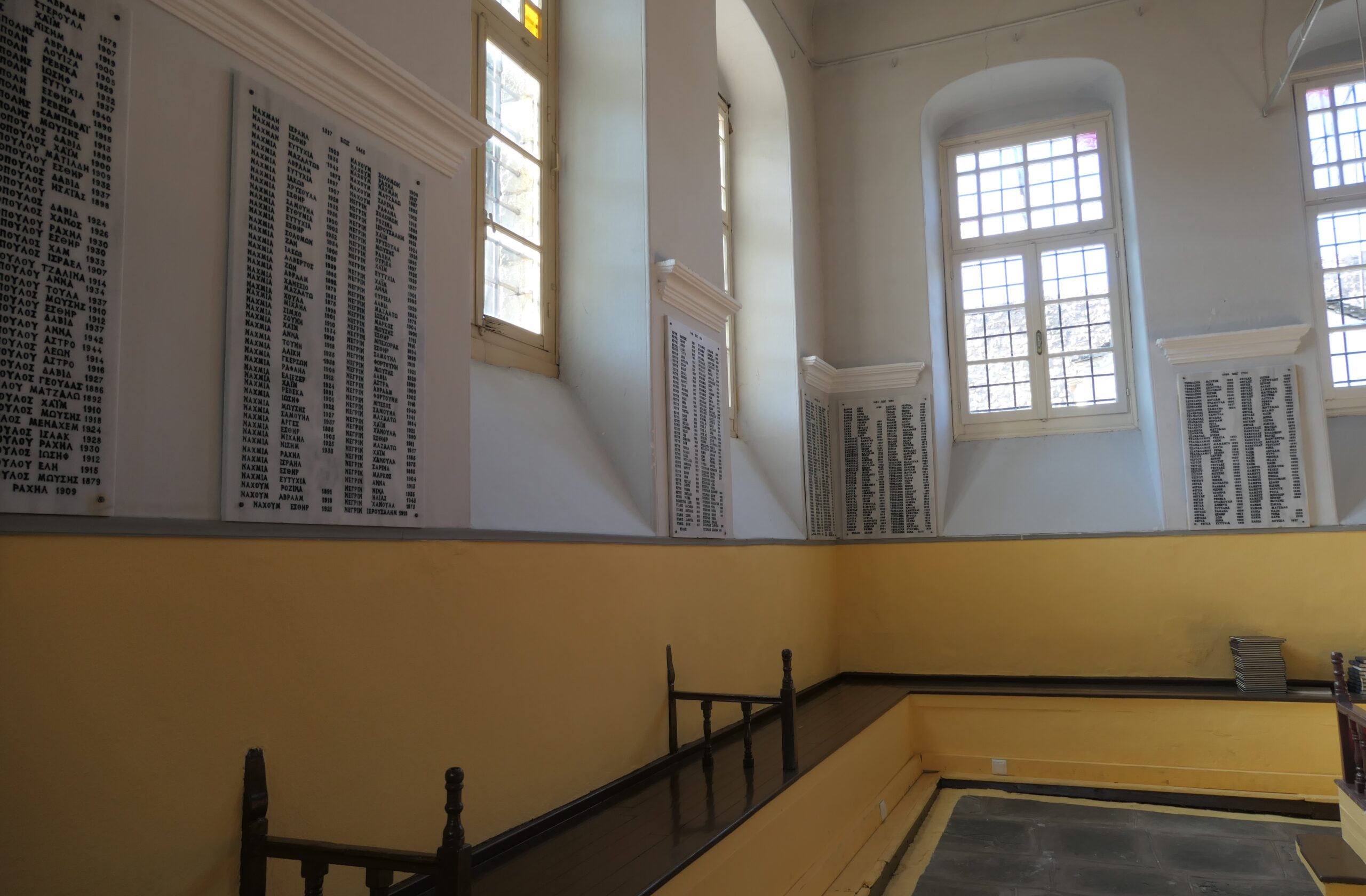
The couple on the tour asked us where we are from, we said “Israel.” They answered “So are we. We are from Raanana.” We answered, “So are we.” They were visiting Ioannina because it is the city where the wife’s grandfather was from. They very generously invited us to join their tour.
The tour guide was Allegra Matsa, head of the Jewish community in Ioannina. She offers a three-hour Jewish tour of Ioannina, and she is excellent. It is highly recommended to contact her if you have the opportunity to come here. Her email is [email protected].
We learned from her that currently there are only 34 Jews still living in Ioannina, and the mayor of the city is one of them. He is the first Jewish mayor of a Greek city. Services are no longer held in the synagogue, except on the holidays. Last Yom Kippur, they had over 300 attendees. Most were from New York. There is a synagogue in the Lower East Side neighborhood of Manhattan, called Kehila Kedosha Janina, founded by Jews from Ioannina in 1927. It is the only Romaniote synagogue in the Western Hemisphere. Congregants return to Ioannina on Yom Kippur.
Allegra showed us a picture, that was taken inside the synagogue after the war with survivors that returned to their city. The photo was in a catalog of items from the Jewish Museum in Athens. She said that most of what is displayed in that museum comes from Ioannina.
The old, walled city of Ioannina is built on a peninsula into a lake. On each of the lakeside corners, are the remnants of the former Muslim population – a mosque, a bath house, a calvary school and more. Once the city had Jews, Moslems and Christians living harmoniously. In the population exchange, between Turkey and Greece in 1923, the Muslims in Ioannina were sent to Turkey. Since then, there is no longer a Muslim community (except for some recent refugees from Syria). One of the buildings that was formally the Mosque of Aslan Pasha, now houses the Municipal Museum, also known as the Municipal Ethnographic Museum. This museum is dedicated to the three religious communities that once lived here.
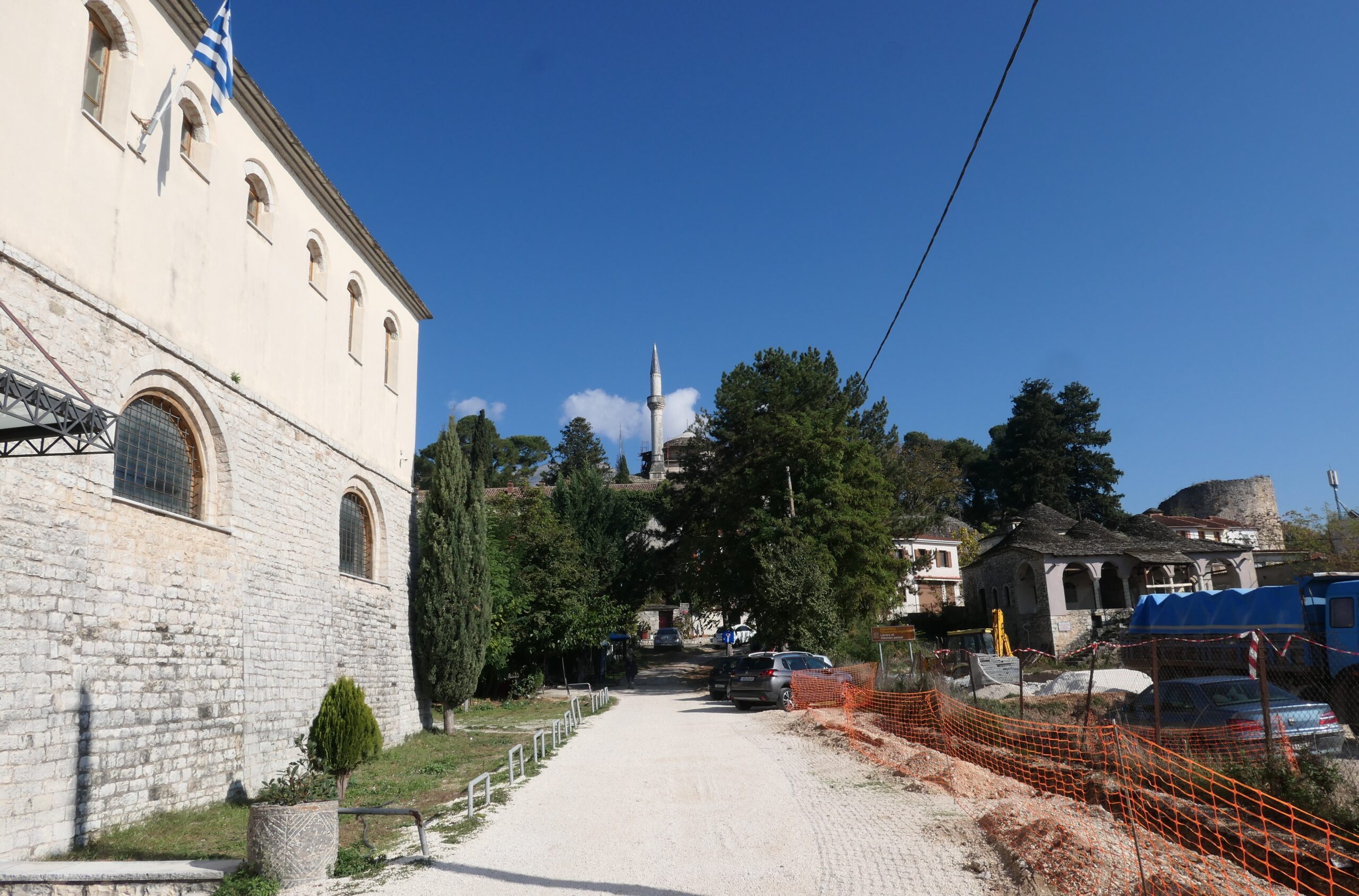
In the Jewish section, there are three large posters detailing the Jewish history of Ioannina. The poster with the recent history, included a photo of our guide’s father. He received a medal for his service with the Greek resistance.
In the museum. we saw ketubot, torah covers, typical clothing worn – parts of Jewish life that once was in Ioannina. There was also a silver scroll holder with a Migilat Ester inside. This was the traditional gift given to a new son-in-law on Purim.
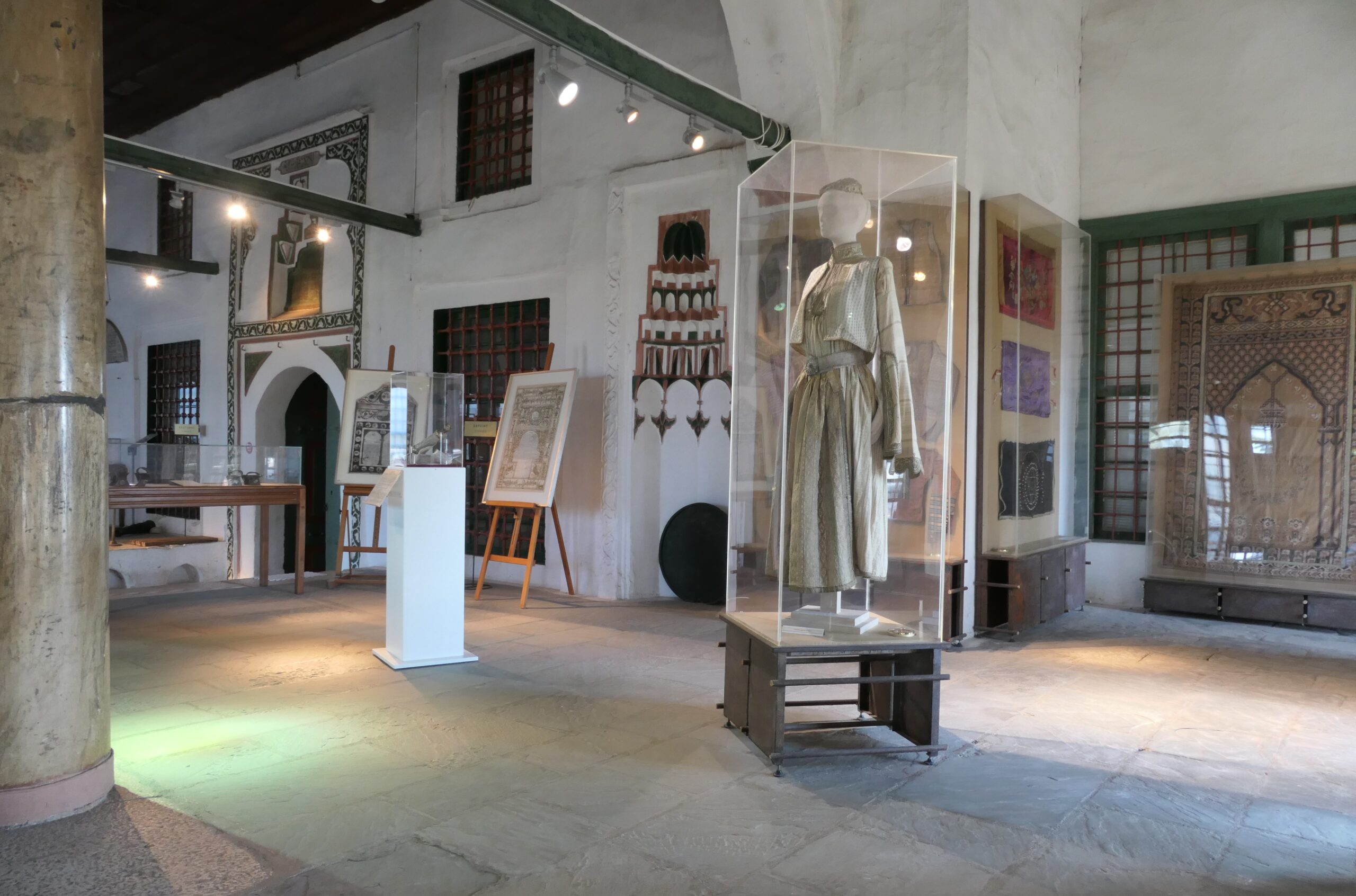
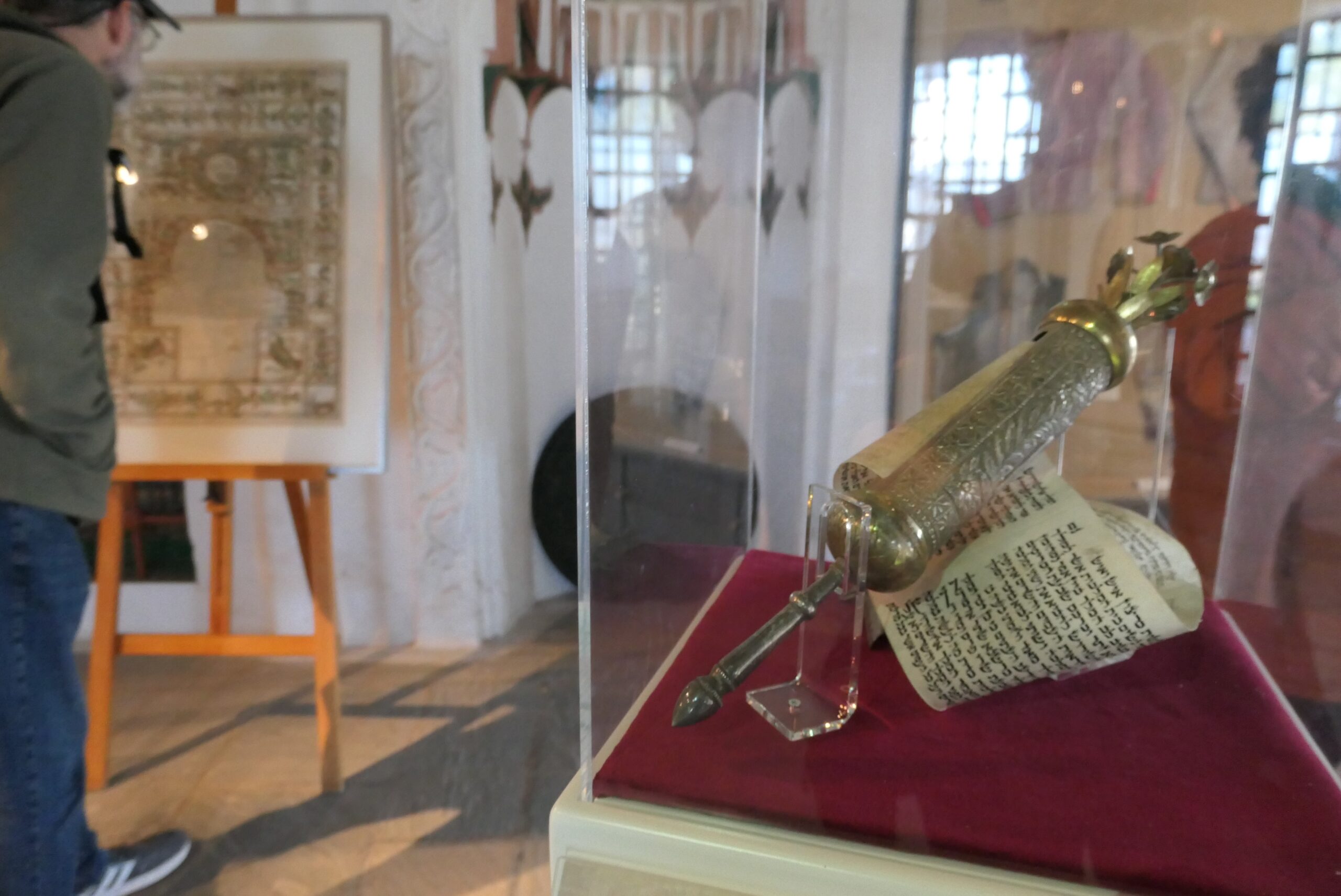
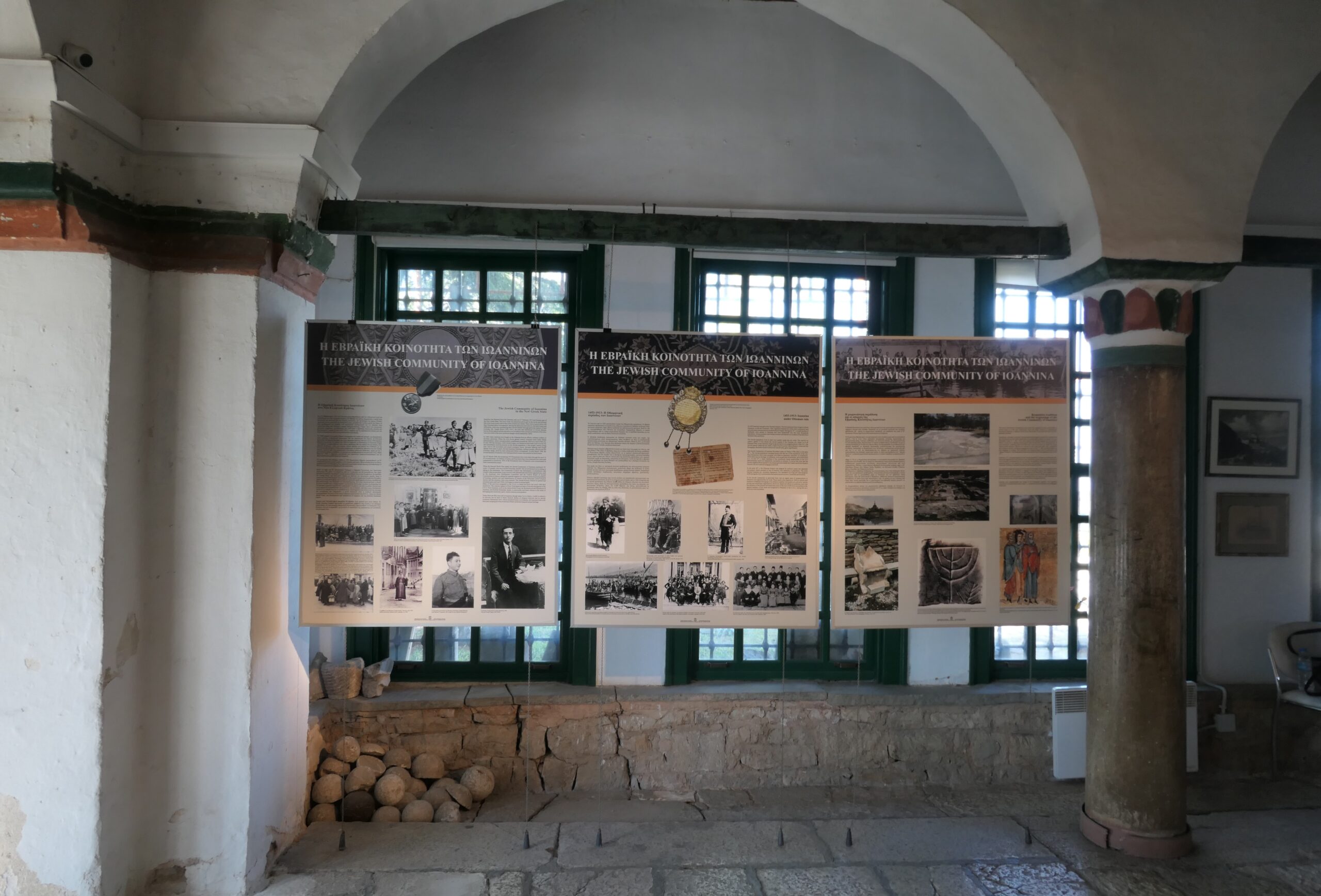
In an additional section of the museum, showing the traditional clothing of the area (each village has its own design and style), Allegra the guide pointed out that the embroidery on the costumes resembled the embroidery we saw on the Torah covers. This is because the embroidery was done by the same Jewish women. Embroidery was one of the essential professions that the Jews did.
The mosque is built on a small rise, and from there was a beautiful view of the lake.
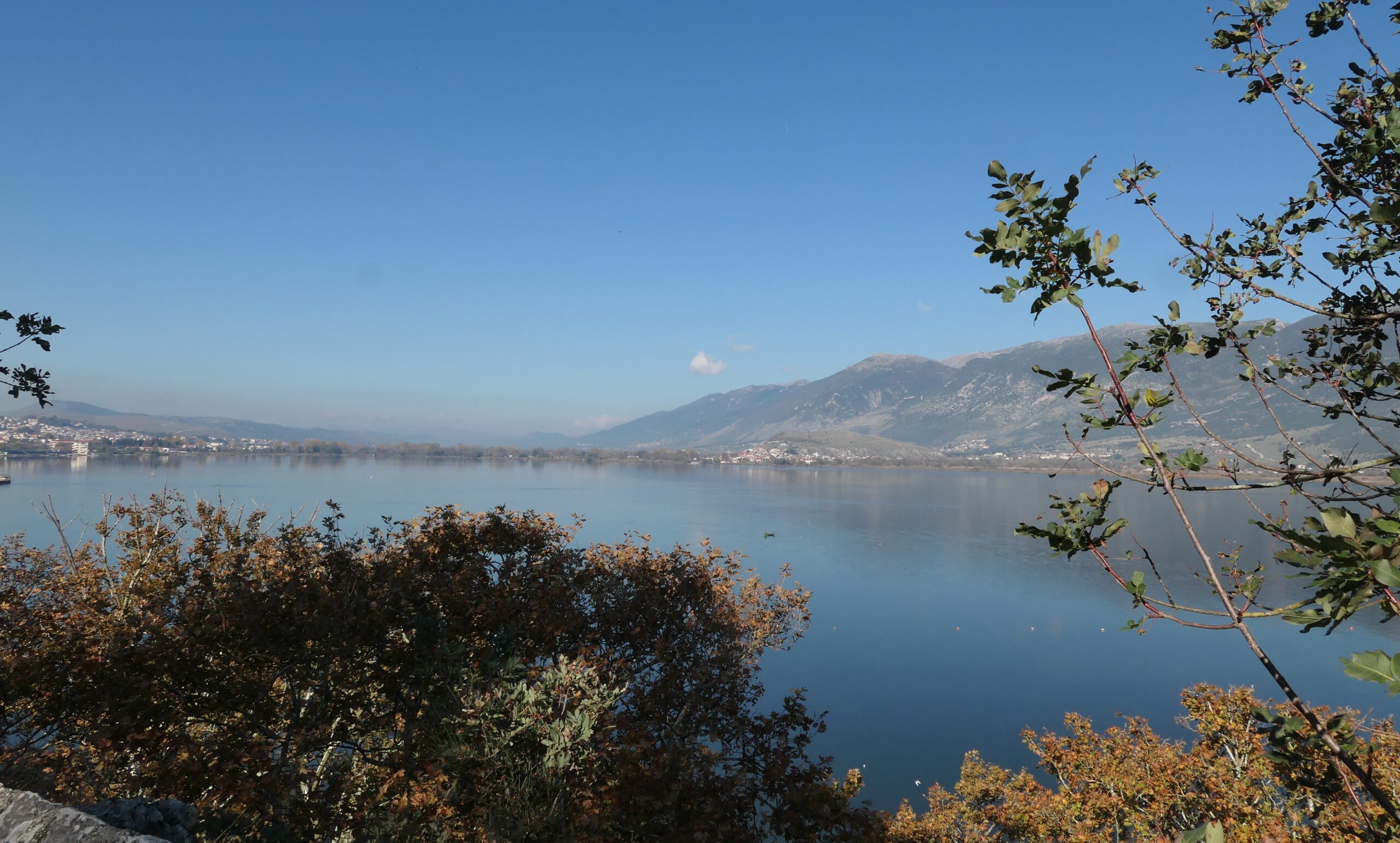
We then left the walled city and walked along the lake shore.
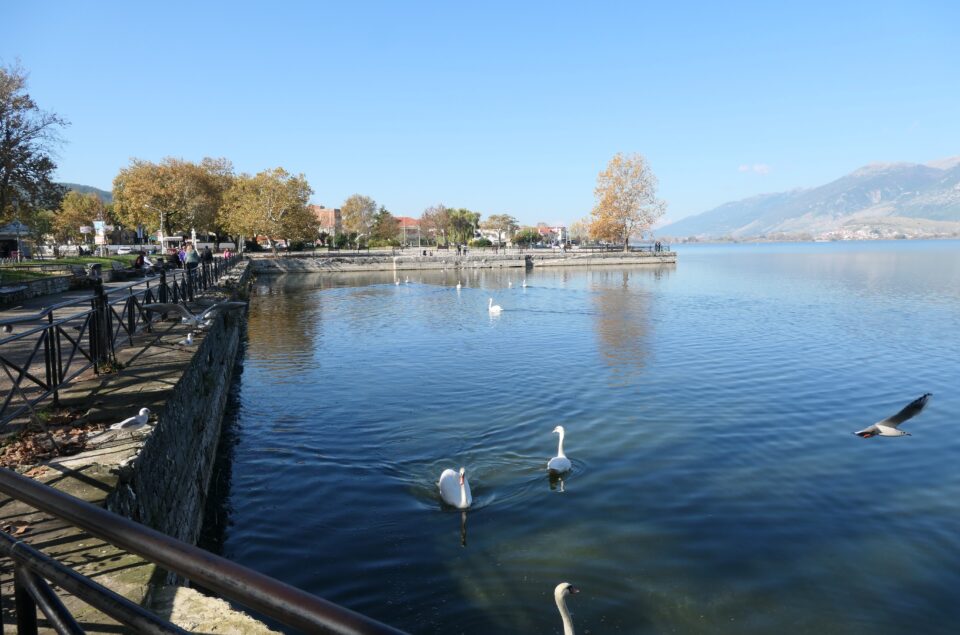
At the corner of the lake across from where the old city wall ends, is an area now full of coffee shops. It was here, that the Jews of Ioannina were gathered before being taken away by the Nazis. In a photo of the time, you see them with their packages. At the time, the Jews did not generally travel anywhere, so they did not have suitcases. They packed their possessions in blankets.
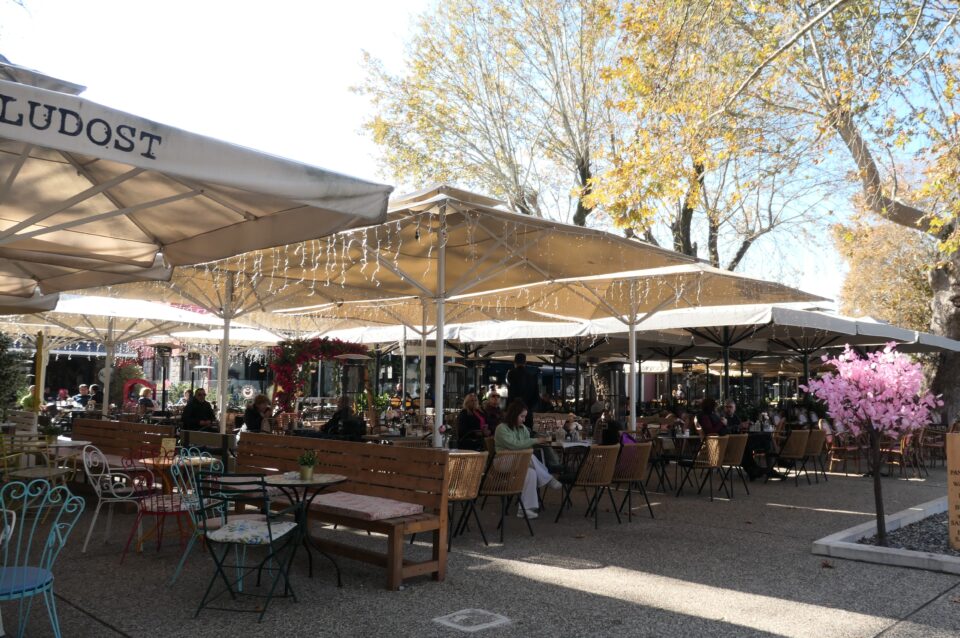
Next to the coffee shops, are the streets of the Jewish quarter. The guide knew which families lived where and knew on which streets there were families living with the same last name as woman from Rannana’s grandfather. She said they have applied to have stumbling stones placed in front of the houses with the names of the former occupants, and are waiting for official authorizations to come through. Some of the houses still show vestiges of their previous Jewish owners on the doorposts or the windows.
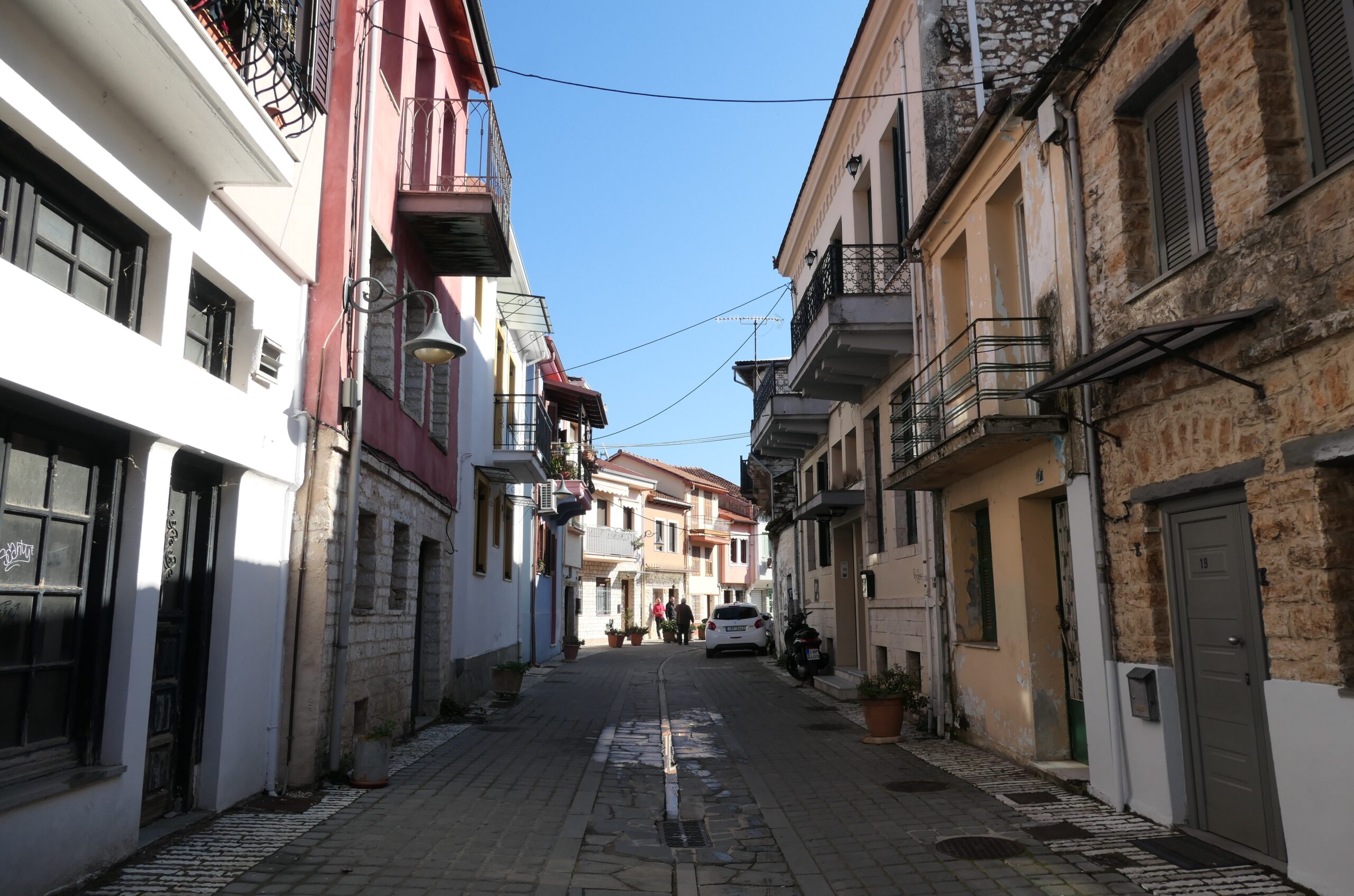
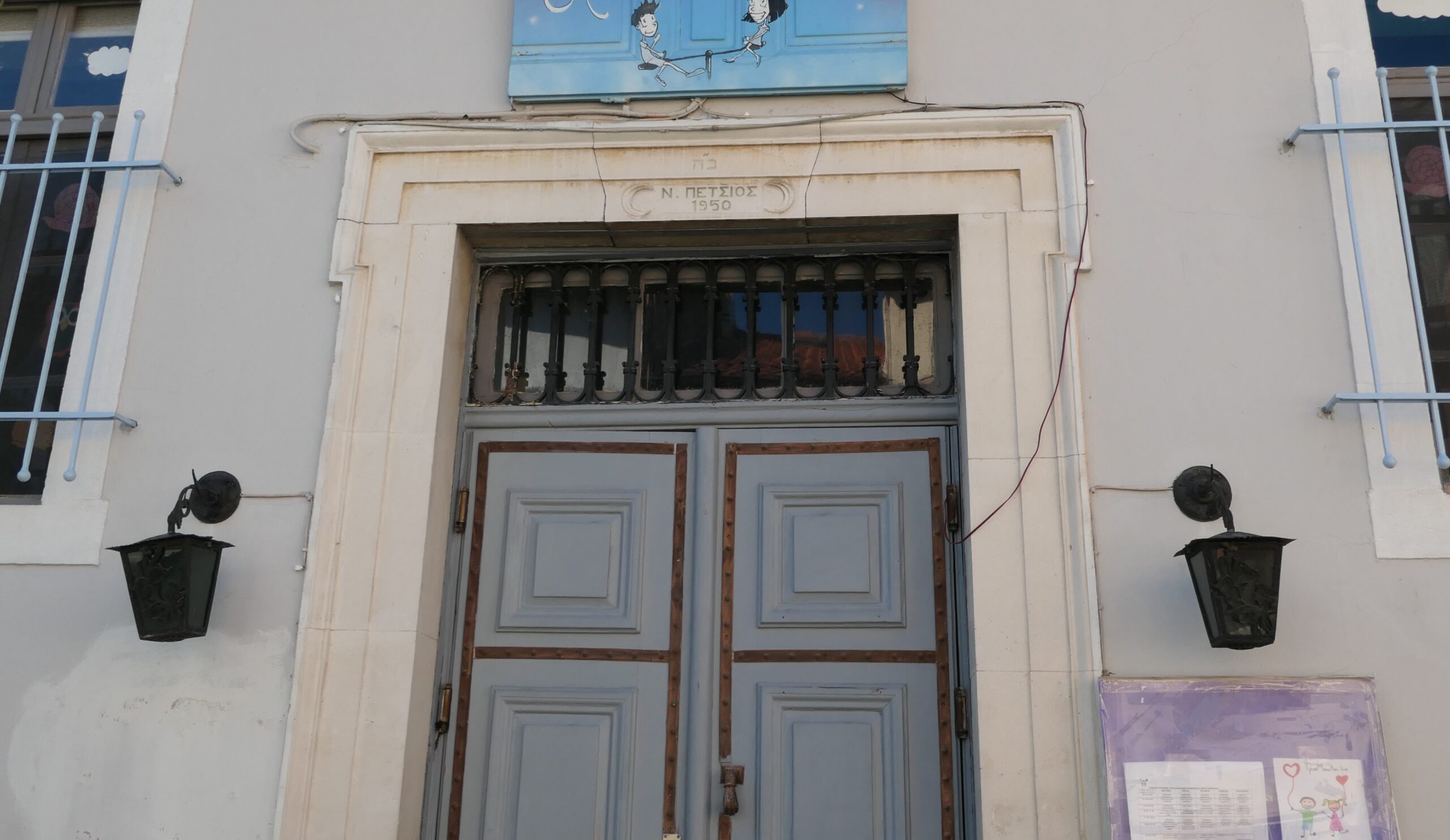
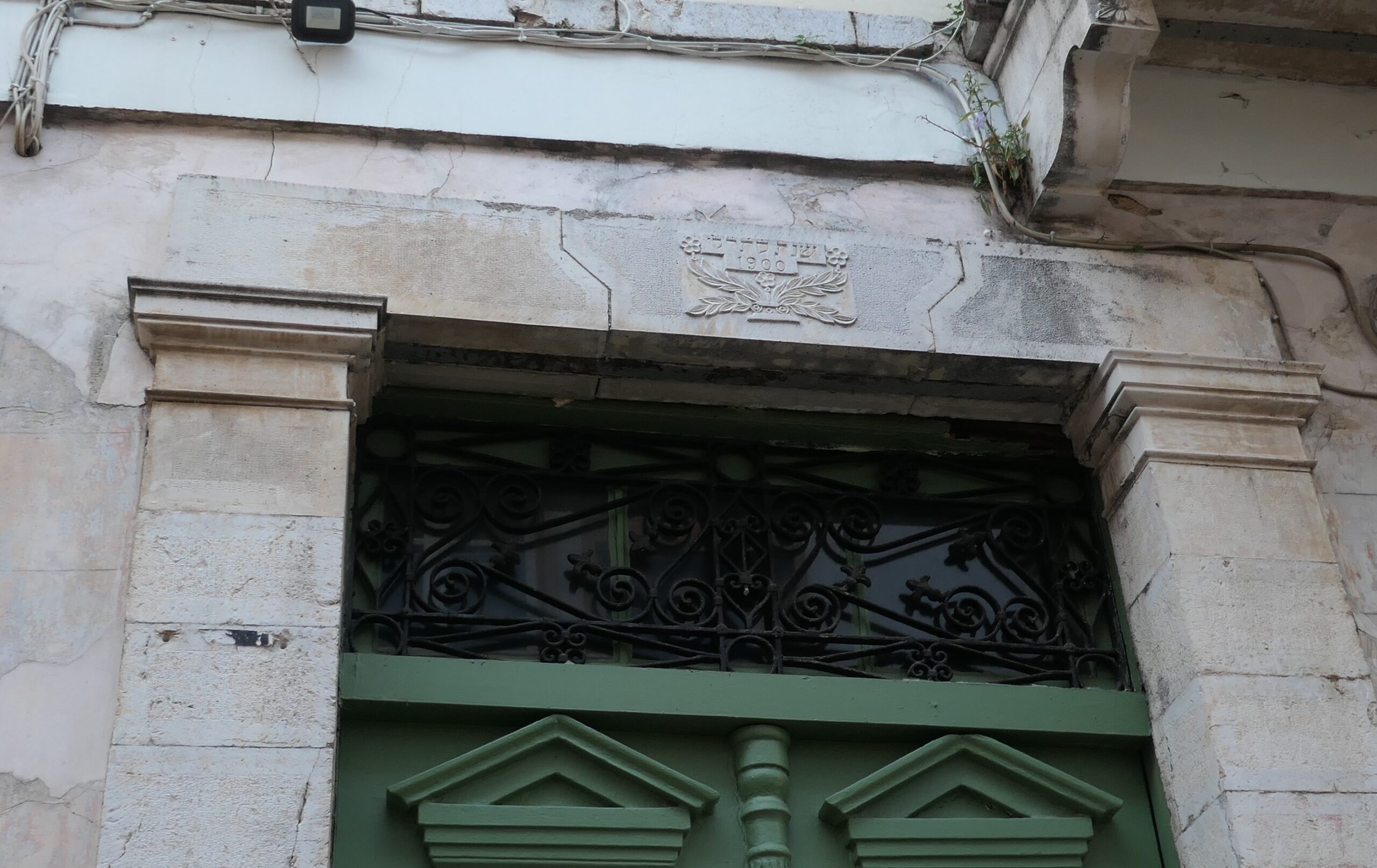

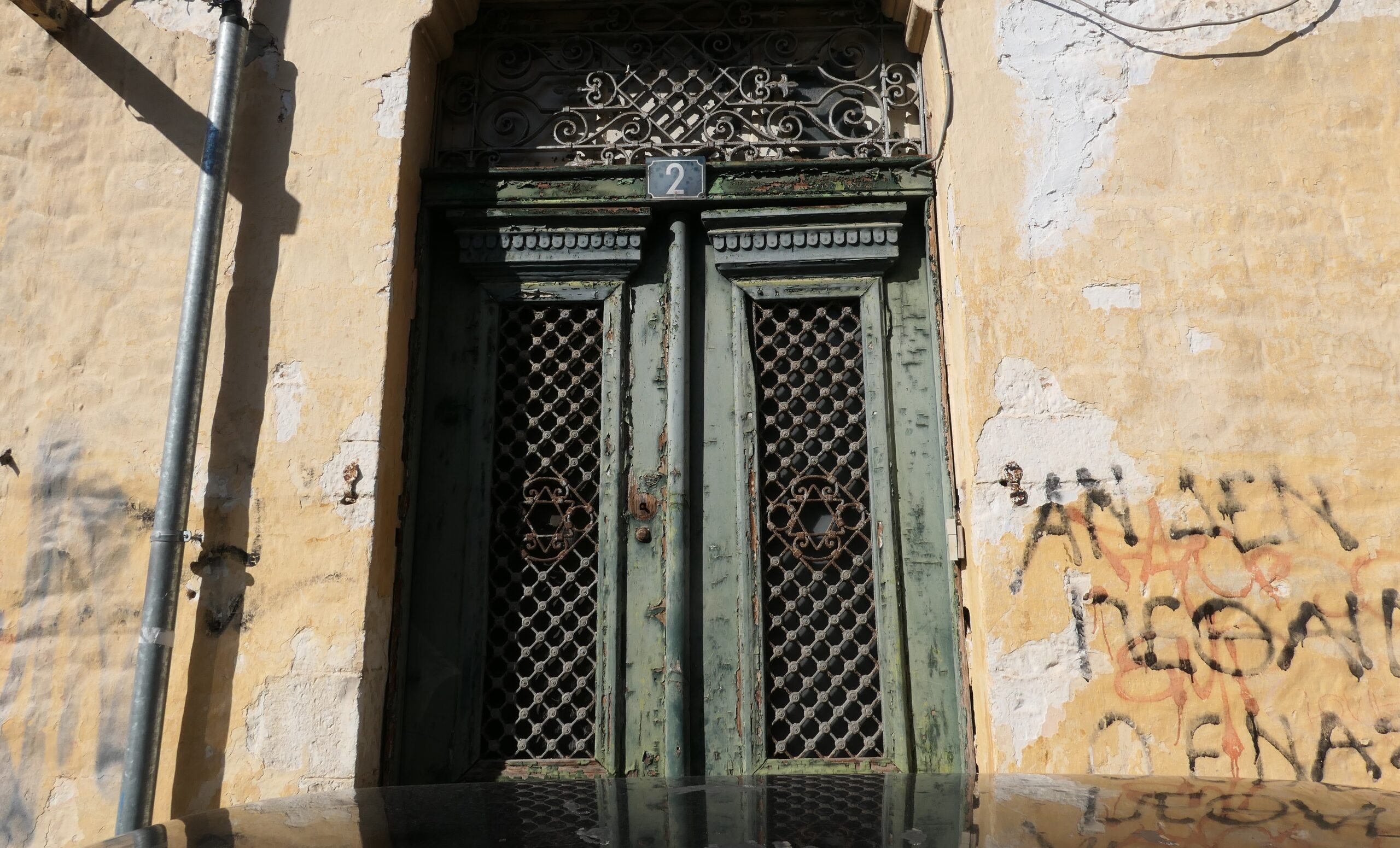
At the end of the street, was the city’s Holocaust Memorial. It was dedicated in 1994. The writing on the memorial says “In memory of our 1850 Jewish cohabitants who were arrested on March 25 1944 and executed in the concentration camps. Ioannina Municipality.“ Allegra pointed out that this is unique – it is the only place where the memorial says “our Jews”. Our – acknowledging that the Jews really belong to the city.
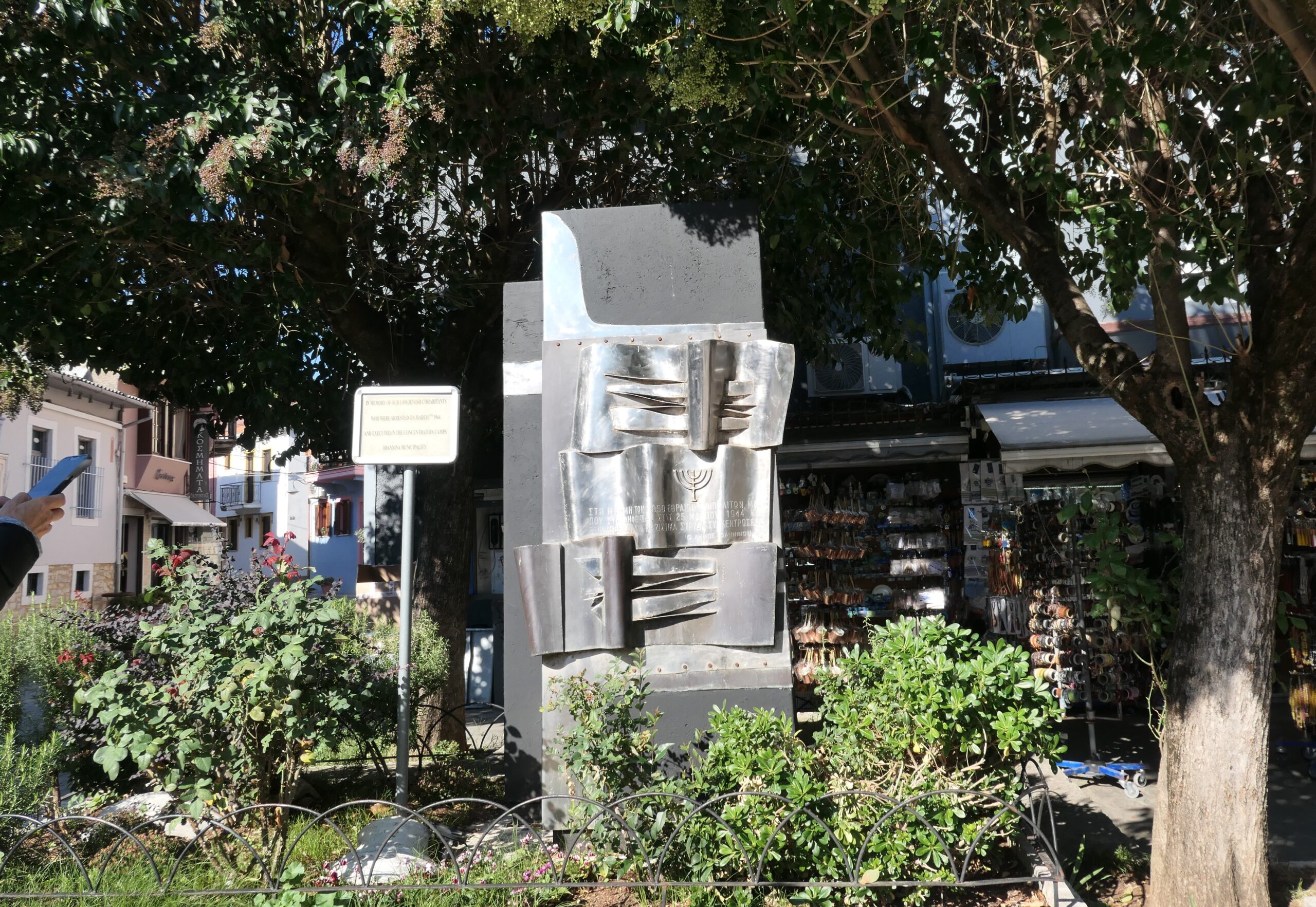
We then passed a bakery. The woman from Raanana highly recommended that I try some Galaktobouriko, a pastry of phyllo dough filled with vanilla cream. There was none displayed, but when the guide asked, the person in the bakery brought out a tray that was still warm from the oven. It was delicious!
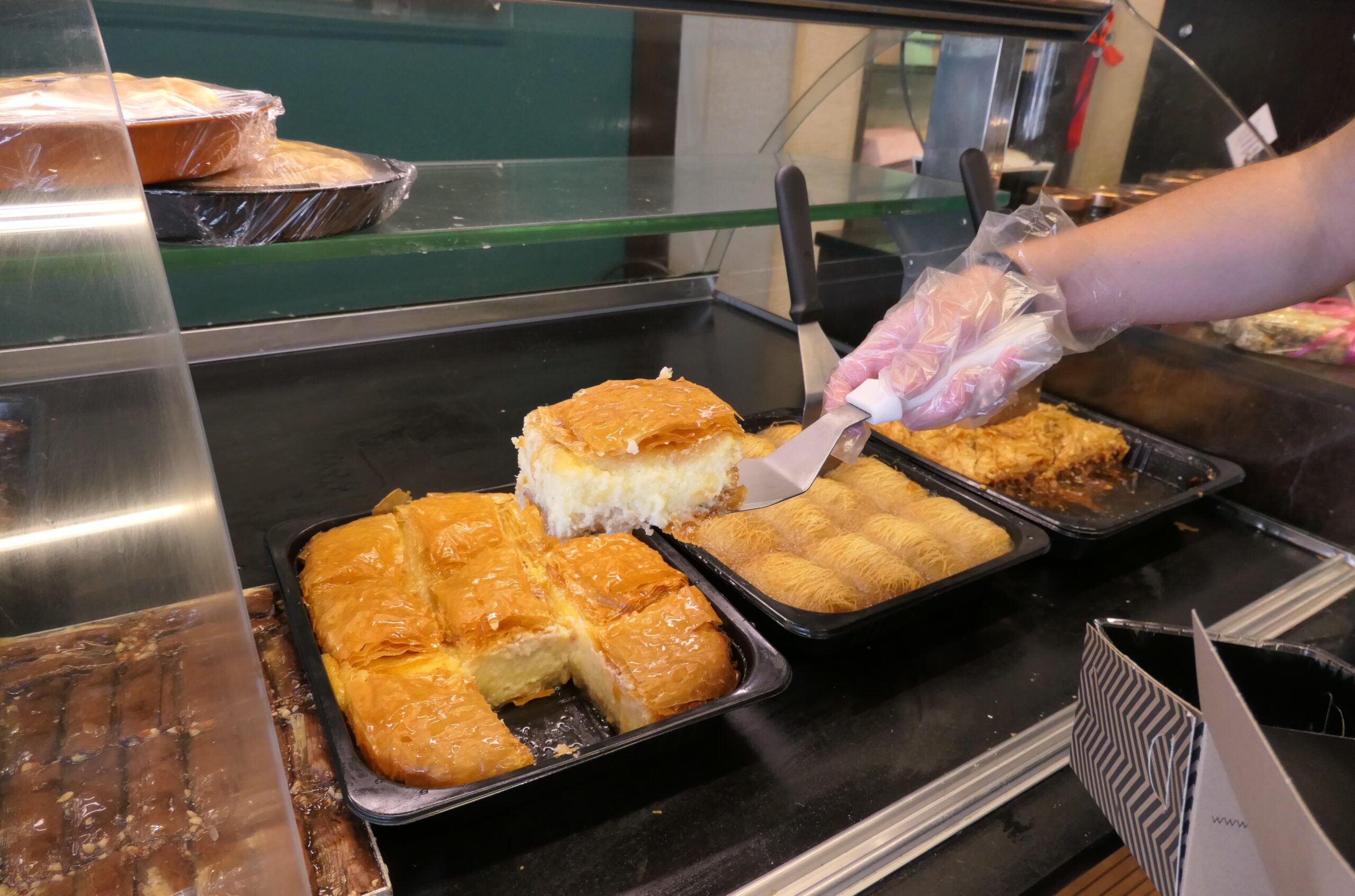
We continued to wander the streets to see more symbols of Jewish presence. All in all, the tour was very enlightening, and we were very lucky to have met the other couple and very thankful for their generosity in letting us join in.
After the tour, we found a bench near the walls of the old city and had our usual sandwich lunch. We then returned to the car and drove out to the Jewish cemetery. As usual, the cemetery was locked behind a gate and a tall wall. We had heard on the tour, that the cemetery is large and only about 1/3 used. Once again, the ladder came in handy, and we were able to take some photos over the wall.


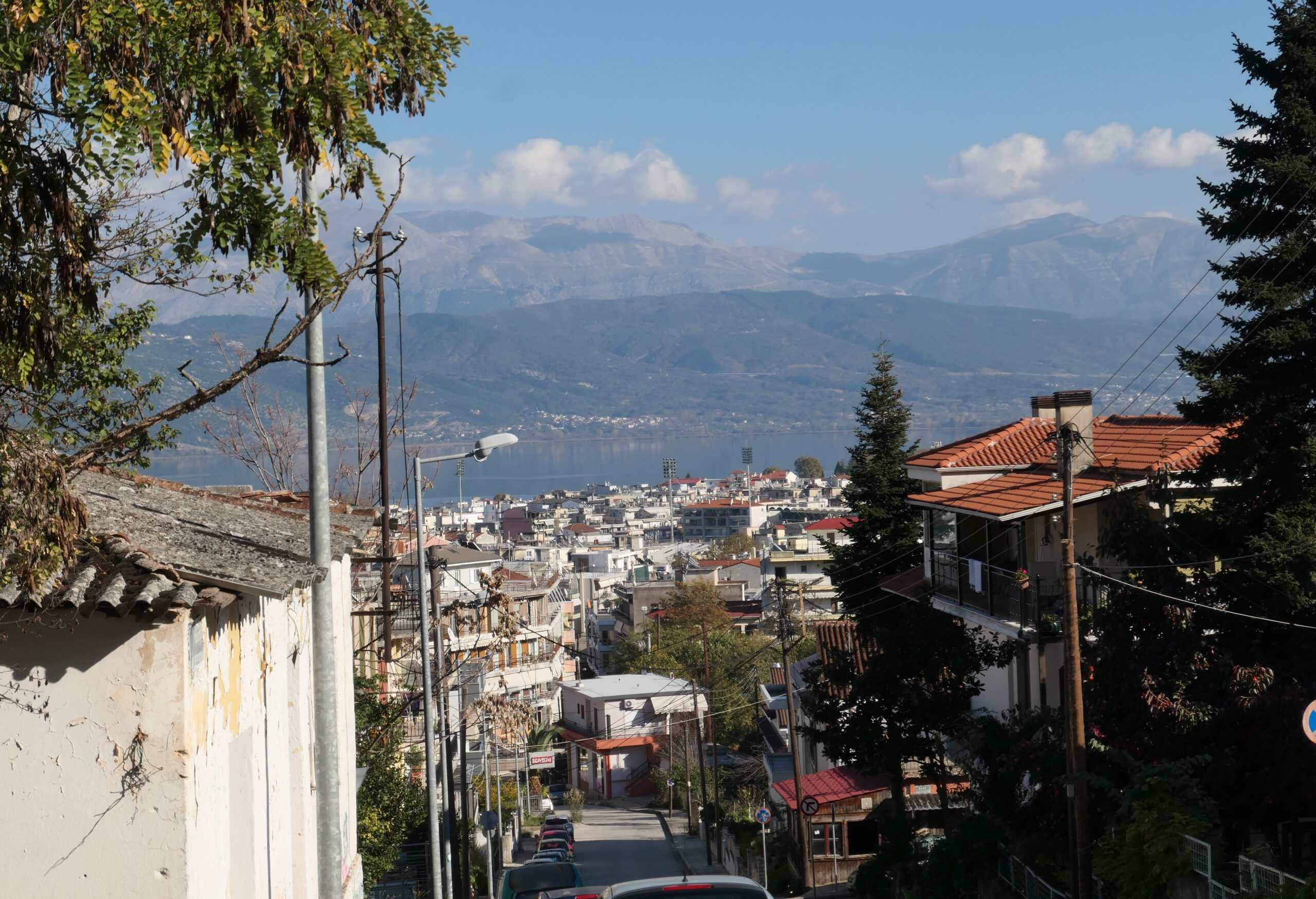
From there, we went to our AirBnb apartment. Although it was just the middle of the afternoon, we decided to call it a day.
Tomorrow, we head to the mountains.
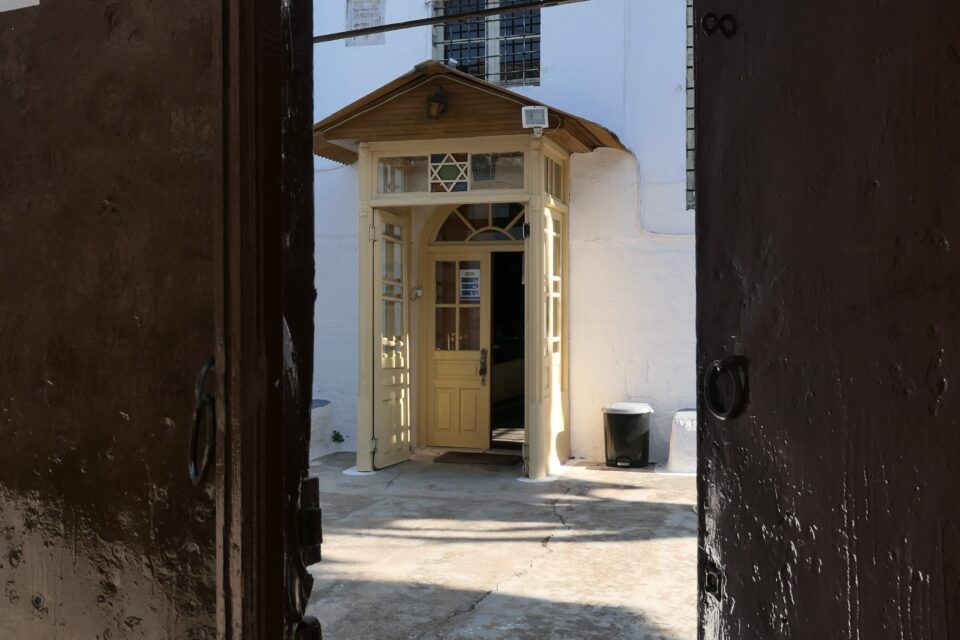
Very insightful
Such luck with the guided tour!
Are Romaniote Jews from Rome? I never heard of that term before.
From the Wikipedia : The name Romaniote refers to the medieval Byzantine Empire, which included the territory of modern Greece, and was for centuries the homeland of this Jewish group. Historically, the Empire was commonly referred to as Rhomania (Ῥωμανία) and its Christian citizens as Rhomaioi “Romans”, while the Greek-speaking Jews were called Rhomaniṓtes (Ῥωμανιῶτες),